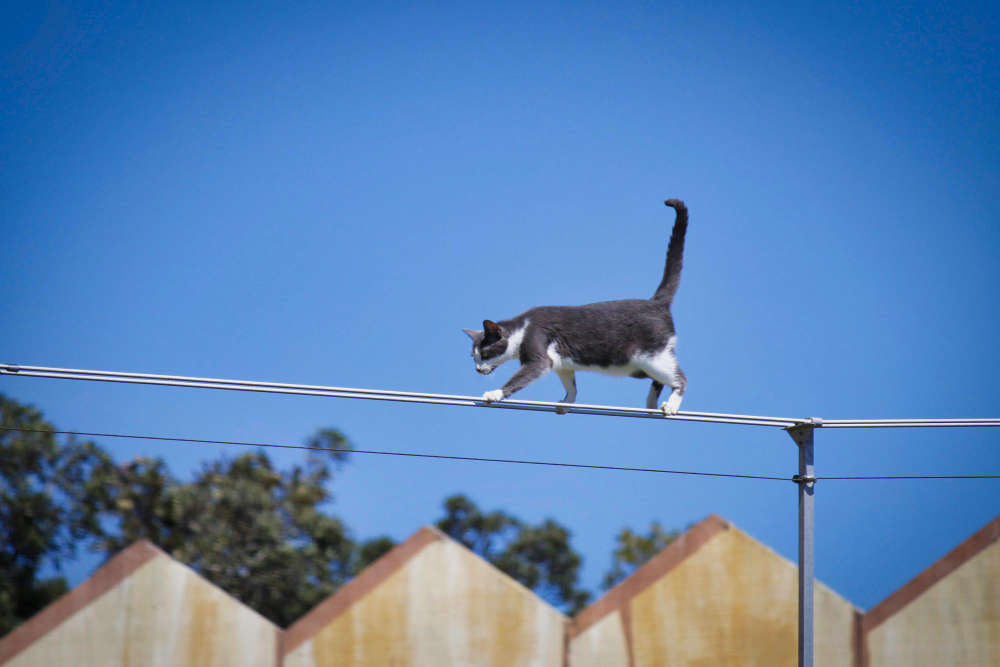Cats often amaze us with their incredible ability to balance gracefully on the narrowest of surfaces — from the top of a fence to the edge of a bookshelf. Their effortless movements almost seem like magic, but there’s fascinating science behind their elegance.
The Secrets Behind a Cat’s Balance
Flexible Spine: A cat’s spine is extraordinarily flexible, with more vertebrae than humans. This flexibility allows cats to twist and adjust their bodies mid-movement, maintaining perfect balance even when navigating tiny spaces.
Tail as a Counterbalance: The tail is one of the most important tools for a cat’s balance. It acts like a counterweight, adjusting direction and providing extra stability, especially during precarious walks along ledges or branches.

Sensitive Whiskers: Whiskers aren't just for sensing touch; they also help with spatial awareness. They detect changes in the environment, helping cats judge the width of surfaces and avoid missteps.
Strong Muscles and Paws: Cats have powerful muscles and highly sensitive paws. Their toes can grip and adjust minutely to changes in surface texture, giving them a firm hold even on uneven or slippery paths.
Keen Inner Ear Sense: The vestibular apparatus is inside a cat’s inner ear. This system detects head position and motion, allowing a cat to make lightning-fast corrections to its posture as needed.
Fun Fact: Cats use these balancing skills for walking, hunting, climbing, and escaping predators. Their agility has evolved over thousands of years to survive in complex environments like forests and rocky landscapes.
How to Support Your Cat’s Balance at Home
Create Safe Climbing Areas: Provide cat trees, shelves, and safe platforms. This will not only entertain your cat but also strengthen its muscles and maintain its balance skills.
Keep Claws Healthy: Regularly check your cat’s claws. Sharp, healthy claws improve grip, which is essential for safe climbing and walking.
Ensure Good Nutrition: A healthy diet rich in proteins, vitamins, and minerals supports muscle tone and joint flexibility, both crucial for balance.
Protect Against Falls: Even skilled cats can misjudge a leap. Make sure windows are secured with screens and keep dangerous high surfaces clutter-free.
Playtime Is Key: Use toys that encourage jumping, chasing, and climbing to keep your cat’s reflexes and coordination sharp.
Conclusion
What seems effortless is a finely tuned combination of anatomy, instinct, and experience. Cats are masters of balance, and by supporting their health and environment, we can help them stay graceful and confident explorers for years to come.
